Alpine Australia

VulcanSpirit
Richard & Alison Brunstrom
Thu 18 Dec 2014 05:08
|
An
alpine climate requires that the average annual temperature does not exceed
10oC; Australia has a relatively tiny area in the Snowy Mountains
amounting to 0.15% of the country, half of it in Tasmania, which satisfies this
criterion. Here is the very top of the Snowy River catchment in NSW at around
1850m, with Mt Kosciuszko (2228m) a rather indistinct bump at the extreme left
of the horizon:  In the middle is the river with the path to Blue Lake snaking up to the
right. As you can see the area is montane heath, but in the foreground are the
only trees able to survive at this altitude, Snow Gums Eucalyptus
pauciflora. They have beautifully coloured bark, basically light grey which
strips off to leave a lovely range of whites reds and browns - really very
attractive trees indeed:
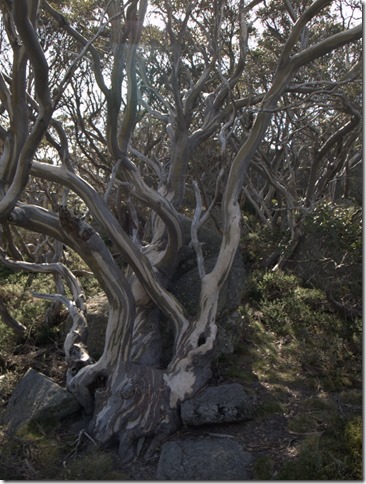 Puzzingly to botanists they have not evolved to be deciduous but instead
cause their outer twigs and leaves to hang vertically thus assisting in shedding
snow. Its Latin name of course means ‘few flowers’ but in fact it is covered in
beautiful white flowers in the spring. Its name is thought to have resulted from
the flower buds having simply dropped off the dried specimen originally used to
name the species. By the very strict rules of biological nomenclature the given
name must continue even though clearly wrong (my favourite example of the
application of this rule is the American alligator Alligator
mississipiensis whose name results from a simple mis-spelling of the river
by the original French author. A fierce debate has raged for years in
appropriate circles about whether it can be corrected).
The VS crew toiled up the path in the spring heat towards Blue Lake,
crossing our first snowfields for quite a while:
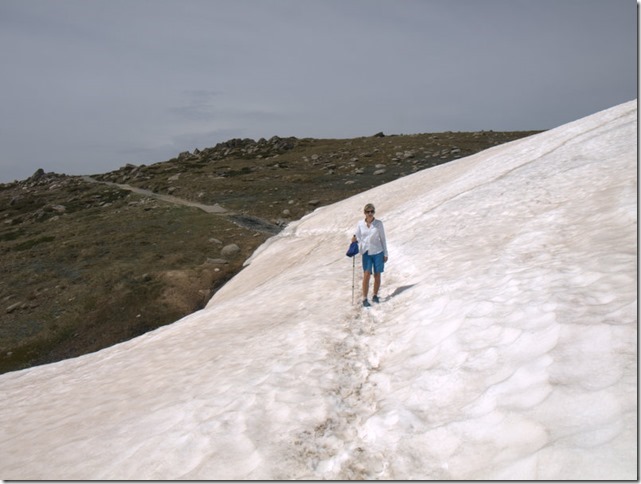 And arriving at Blue Lake:
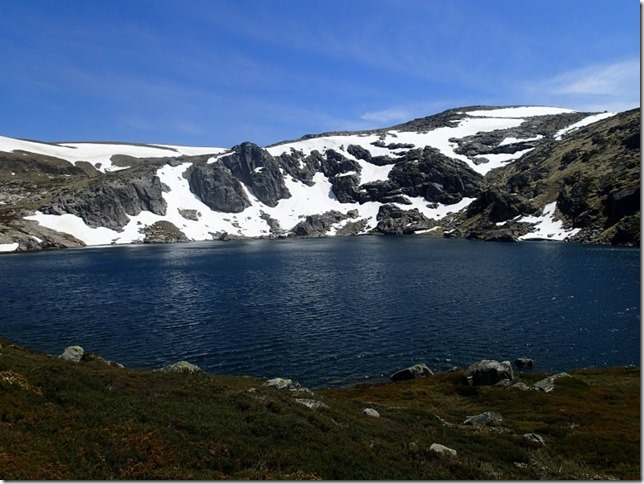 This is the largest of only five glacial lakes in mainland Australia; the
view could very easily have been taken in North Wales – except for the frogs. Up
here lives the Eastern Froglet Crinia signifera which breeds in the
near-freezing snow melt. They have a very loud chirping call despite being tiny
and the whole valley resonates with their calls. Extraordinary.
And of course, there are the alpine flowers. Here is your correspondent
botanising (note the sensible walking shoes previously referred to):
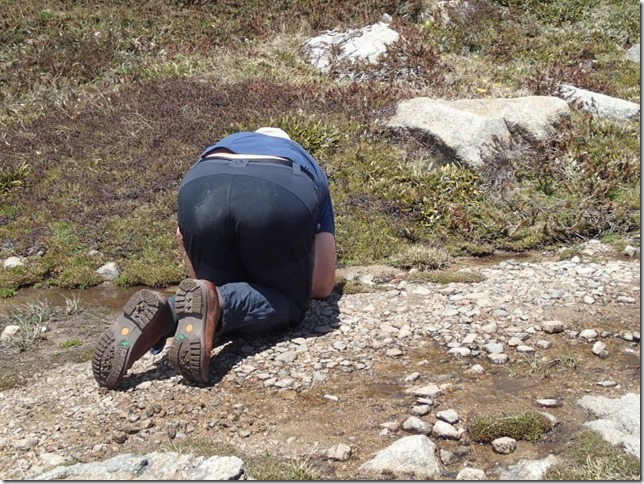 And here are some results of said botanising:
This first picture is of the Anemone Buttercup Ranunculus
anemoneus a very rare and beautiful flower endemic to Kosciuszko. It
suffered terribly after the arrival of Europeans who put cattle up to graze on
the high alpine meadows from the 1830s onwards but has bounced back after
grazing was stopped as part of the Snowy Mountains Hydro scheme in the
1940s.
 And this is the Sky Lily Herpolirion novae-zelandiae with ground
level flowers:
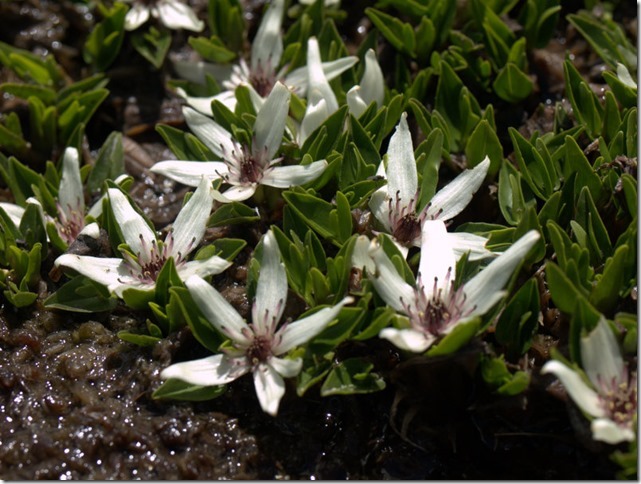 Ranunculus collinus, the Mountain Buttercup, one of twenty or so
Australian buttercups:
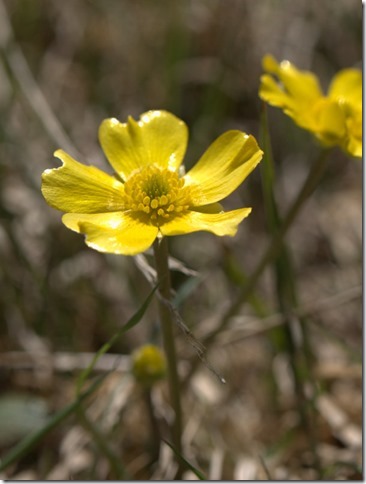 This a mountain eyebright, Euphrasia sp – I know not which. These
plants are parasitic on the roots of others and are therefore very difficult to
cultivate:
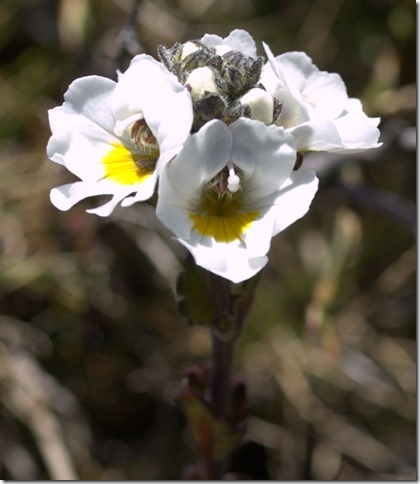 There are some lovely flowers here - nothing like the wonderful displays of
the European Alps, but better than most of upland Britain.
|